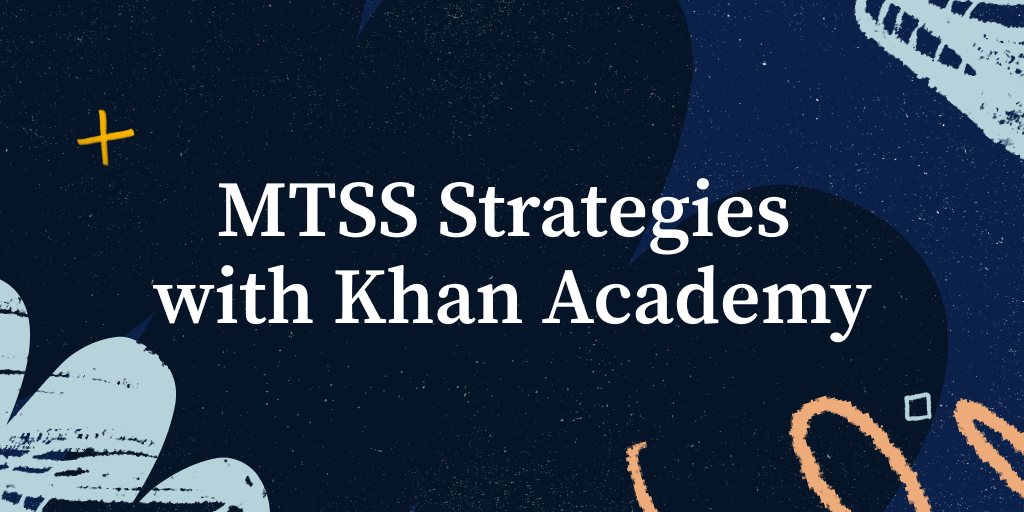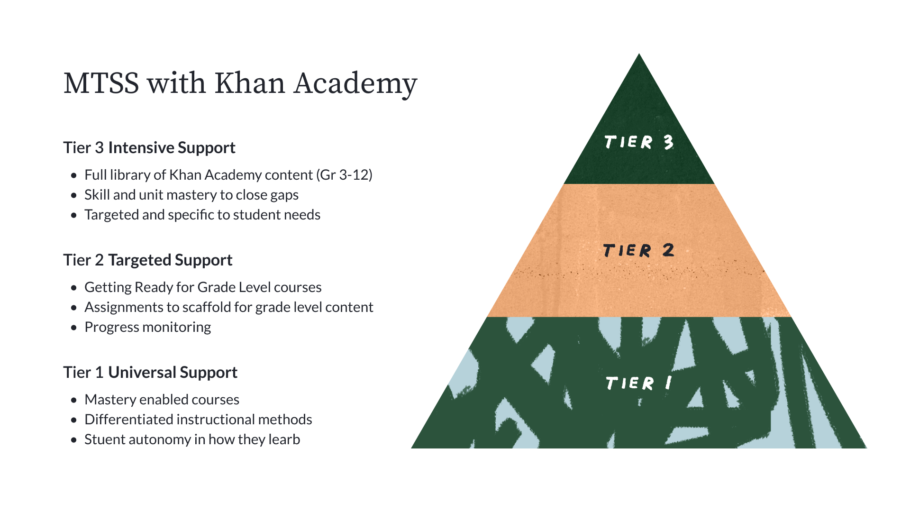[ad_1]

By Raven Casseus: As a former high school administrator, I still wonder why eighth graders are starting high school in remedial classes or why high school juniors are struggling to get enough credits to graduate. How and why did the system fail them? They may have been honor roll students in elementary school with great standardized test scores, and then something shifted. But what?
Could it be because middle and high school students are supposed to be independent? Do teachers shy away from small groups because they believe students perceive group work as an elementary school practice? Are teachers struggling to provide proper support and intervention to their students? Unfortunately, the answer to all of these questions is “yes.” However, a strategy to tackle this problem may already exist.
Implementing MTSS at the secondary level
The same structured activities, planning, and support teachers receive in elementary to support struggling students can be duplicated in our secondary schools through a Multitiered System of Supports (MTSS). We do not need to recreate the wheel, as there are abundant resources, implementations, and skills, as well as plenty of human power, that already exist in your school building. It’s time to action these strategies and get your students the proper intervention.
To ease your mind and address any of your concerns, here are a few questions you may have:
Is MTSS for all students?
Yes, all students can benefit from MTSS.
Not sure if my teachers even know what MTSS is? Not even some best practices?
Teachers should be a part of creating the foundation and implementing MTSS in your building to ensure they are able to support students.
How do I move students between tiers?
Regular progress monitoring will allow you to analyze student outcome and move students between the tiers of MTSS.
Why does this sound so easy and I have yet to figure this out?
The ease comes with a simple plan that is actionable and considers all students.
Is there a tool or resource that can help me?
Yes! Khan Academy is an online tool that supports the three tiers of MTSS with student, teacher, and administrator data to monitor progress.
These questions can be easily answered with a well-thought-out plan for implementation that has the students’ interests in mind. This will look vastly different from school to school, but it can be done. How? Best practices and alignment.
Best Practices for secondary MTSS
Multitiered System of Supports (MTSS) is a three-tiered continuum used to identify academic, behavior, and social and emotional challenges in students. It is a framework designed to screen all students for academic and behavior challenges and is used by schools to provide targeted support to struggling students. The goal of MTSS is to intervene early so students can catch up with their peers.
The three tiers of MTSS are the most important. They are: universal instruction; targeted, group interventions; and intensive individualized interventions. Understanding the three tiers will allow you to move students between tiers and give them the level of support that they need. MTSS is not the same thing as RTI (Response to Intervention) and is more comprehensive. MTSS is also not a curriculum; it is an approach to provide interventions to students to support their academic growth.
Once you and your staff understand what MTSS is, you can start to develop a plan for implementation. Some best practices include :
- Ensure all staff fully understands the definition of MTSS (anyone who could ever work with a student in your building, including coaches, tutors, paraprofessionals, media specialists, and even peer tutors).
- Develop a plan for implementing MTSS in your building.
- Keep your plan simple. Each tier should have one-to-three implementations.
- Administrators, teachers and counselors, and/or support staff should be involved in making the plan.
- Include the whole child in the plan, including social-emotional support, as well as academics.
- Use resources , programs, and systems you already have in place (tutoring, intervention blocks).
- Maximize student schedules and time spent throughout the school day.
- Tier 1 should be the strongest. This is your foundation!
- Parents and members of your community should know your plan. Post information on your website for easy access and/or host a parent night.
- Identify students, analyze the data , implement a plan, and review and reflect on student progress.
How to align your secondary MTSS with Khan Academy
Now that you have a clearer picture of how you will begin this MTSS process, let’s look at how you can use Khan Academy as a single tool to execute your MTSS vision.
MTSS Tier 1: Universal Support
Supports universal screeners, quality instruction with differentiation, student choice.
Khan Academy has:
– mastery-enabled courses at grade level
– each student has their own learning path ( course-mastery goals)
– course challenges
– instant feedback right on the student dashboard,so they can see their progress as they grow
MTSS Tier 2: Targeted Support
Supports mastery learning, small group instruction, progress monitoring.
Khan Academy has:
– getting ready for grade-level courses that target critical prerequisite skills where students need additional support
– progress-monitoring reports
– lesson videos and articles
MTSS Tier 3: Intensive Support
Supports one-on-one support, targeted interventions.
Khan Academy has:
– skill and unit mastery to close gaps
– teacher-initiated assignments for specific needs
– access to 3-12 grade-level content

MTSS belongs in the secondary classroom to provide the support and ample opportunities ALL students need to be successful and grow. I know there is so much more to cover, so Khan Academy is hosting a webinar to answer more of your questions: Making MTSS Succeed in High School: Taking Action with Khan Academy. Register online today for this free webinar on Nov. 16th at 1 pm EST.
[ad_2]
Source link